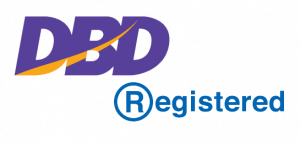
The Next Steps After Launching Your New Website
The Next Steps After Launching Your New Website
Building a website takes time and planning. So, you did the right thing and hired a web designer, and the site is fantastic. But after launching a new website, what’s the next step?
Now you need to attract traffic. That means putting the right tools in place, creating a strong content strategy, and promoting your site online.
Get Reporting Tools in Place
You’ll need to establish the following:
- Who is visiting your site?
- What sites are referring to them?
- How long are they staying at your site?
- What actions are they taking on the site?

You also should understand how visitors are finding and interacting with your site. Are your traffic strategies paying off? Are customers finding the site through keyword searches organically, or through your promotional efforts?
If you don’t have these answers, how will you know what’s working and what isn’t? Fortunately, Google provides a wide range of free tools. Register your site with Google Analytics, get the Google Console, and start to monitor its performance.
Submit Your Sitemap to Google
With a new site, you have two options – submit your sitemap to Google, or wait for the search engine to find and crawl your site. It’s best to do the former because you never know how long Google will take to crawl your site on its own.
In the future, if you change the structure of your site, you should do the same thing again. It’s a quick and simple process:
- Go through to your Console home page and choose the site you want to submit
- Click on the Sitemaps tab on the left of the screen
- Your domain name will appear on the right side of the screen
- In the field next to it, type in sitemap.xml and click “submit”

Promote on Social Media
According to HubSpot, 74% of us use Facebook for business. Social media is useful for a lot more than just funny memes; it’s also great for promoting your business. Here’s how.
Where Does Your Target Audience Hang Out?
Which social media sites does your target audience use most often? If you’re a B2B marketer, it’s probably LinkedIn. If your target audience consists of mostly millennials, Instagram’s a good site to check out. Have an older audience? Try Facebook.
Why Not Just Join All?
While it seems like a good idea to have a presence on every social media site, it becomes impractical. For a social media strategy to be effective, you’ll have to post regularly and engage with followers.
The more company pages you maintain, the harder it becomes to manage. Consider how many posts you could reasonably create in a day, week, month, and so on. It’s far better to have a strong presence on one or two sites and manage them effectively.
Master one or two sites, and then perhaps add others. LinkedIn isgood forbusiness users because it builds a professional image and connects you to thought leaders and other industry experts.
According to Statista, as of July 2019, Facebook was the most popular site in terms of the number of active users; YouTube comes in second. Just remember, it’s not about the numbers as much as where your target audience hangs out.
 Plan Your Ongoing Content Strategy
Plan Your Ongoing Content Strategy
Content marketing gets as much as three times the number of leads that paid advertising does. It’s an effective strategy because it’s more about building your brand than selling your product. A good content strategy provides value to the person consuming it.
Think in terms of thought leadership articles, tutorials, and so on. Why? Because people are less likely to trust paid advertising. Think about it – when last did you click on a paid search result when doing research?
Set up a content strategy at least a month in advance. That way, you can develop themes along the way and produce valuable content that establishes your company as an industry expert.
Final Notes
The internet is a crowded place. If you want your site to be noticed, you have to make that happen. We’ve given you some concise tips—all that’s left is for you to implement them.
Or if you prefer to leave all these tasks to the experts, contact us here at AWcode. We can provide ongoing website management either as a monthly service or by task/project.







